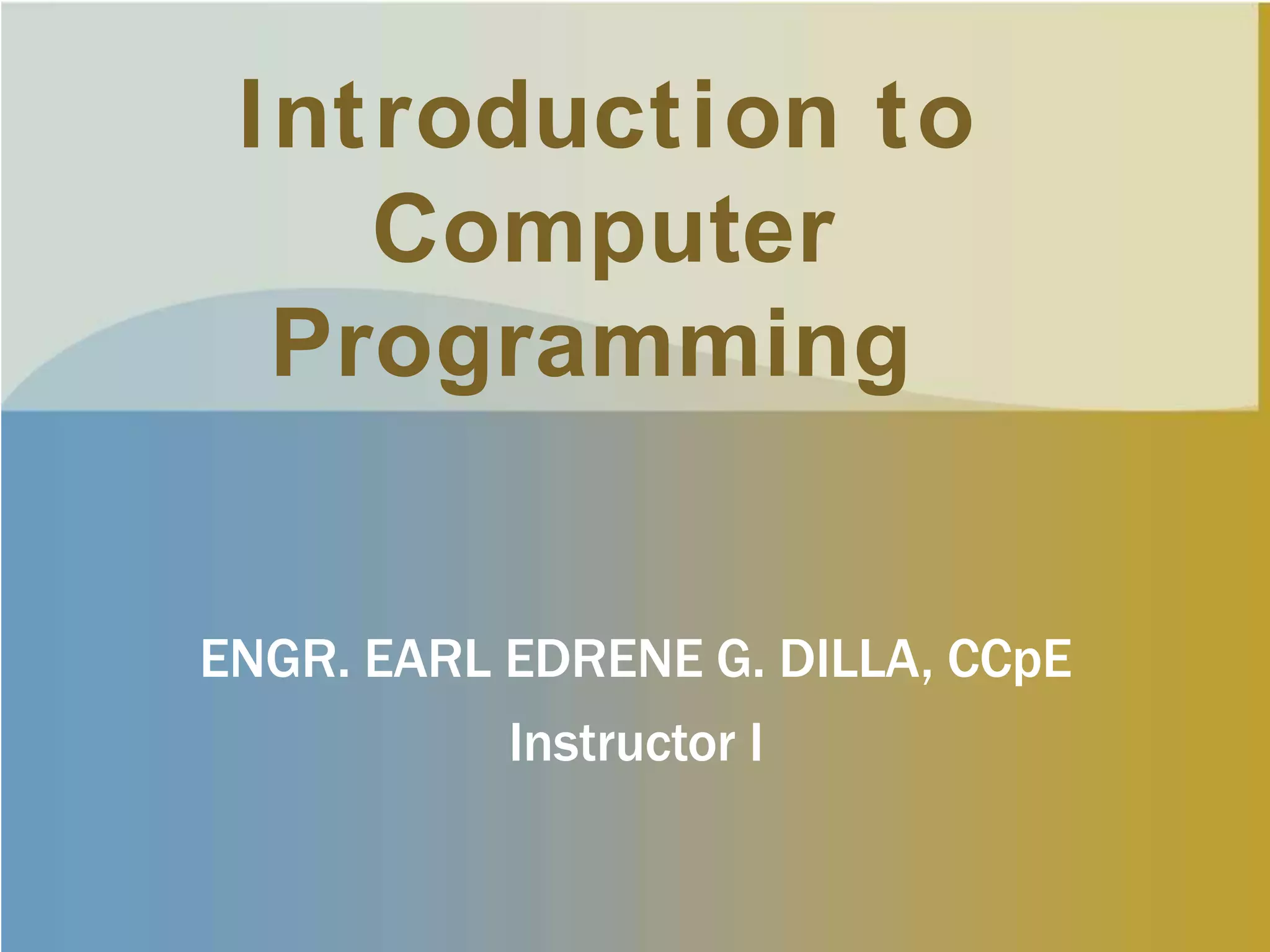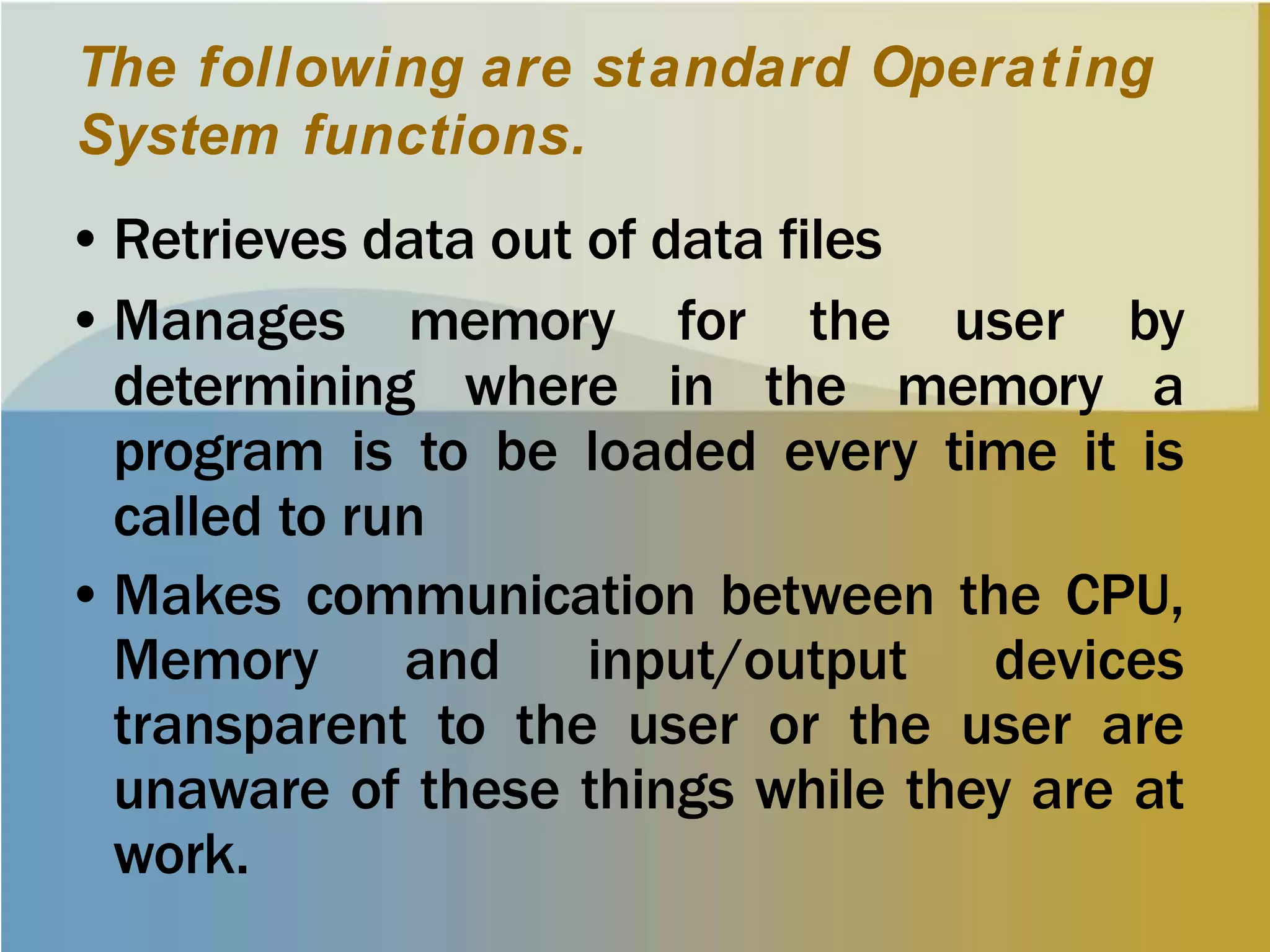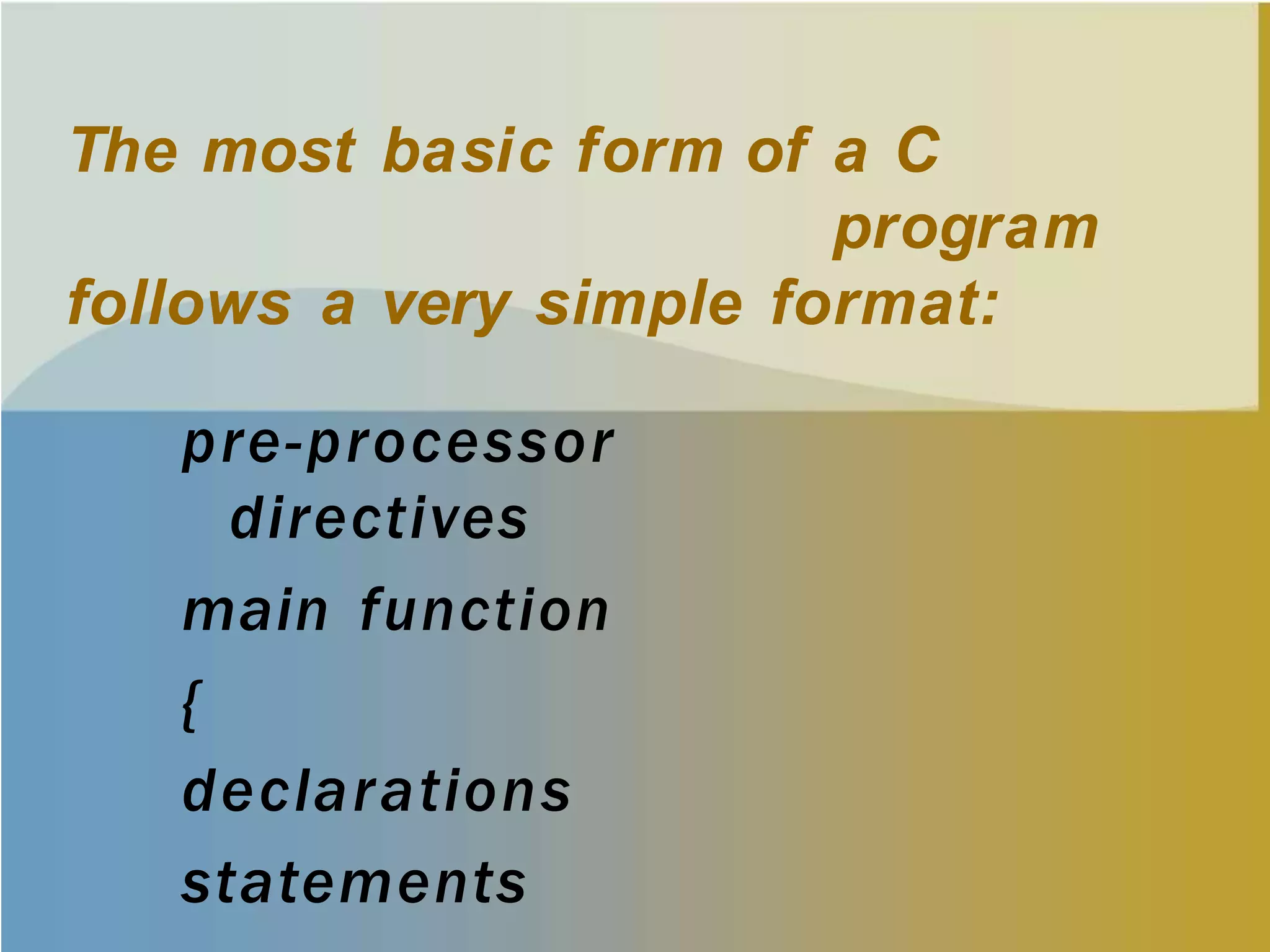This document provides an introduction to computer programming. It discusses what a computer program and programming language are, and describes the major classes of programs as application programs and operating systems. It explains the process a programmer goes through to write code using a text editor and translating the source code into machine language. The document also outlines the basic components of a computer and describes different types of programming languages like high-level languages. Finally, it provides a simple example of a basic C program that converts weight from pounds to kilograms.

















